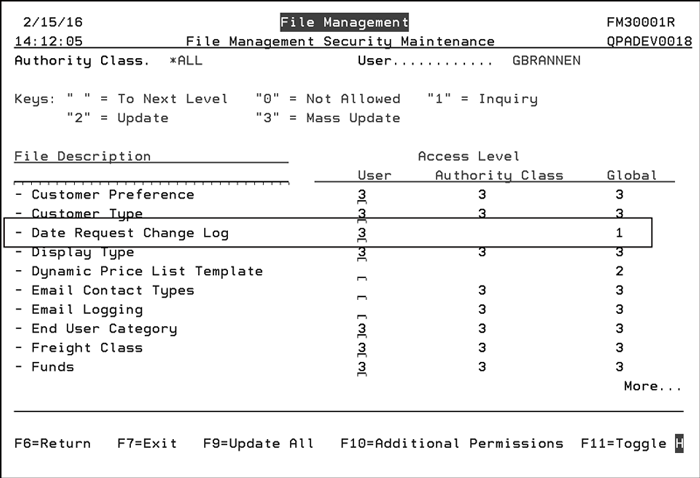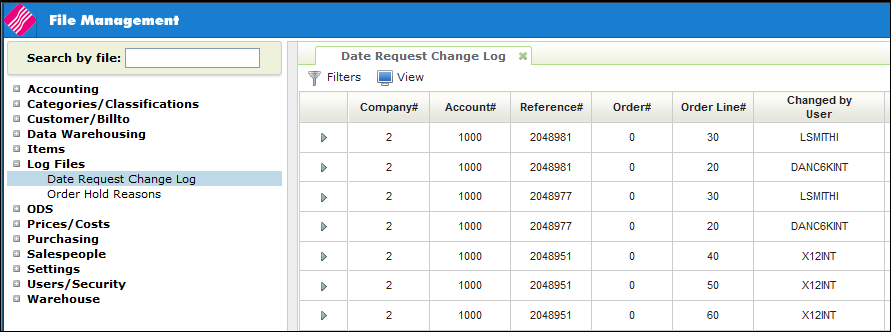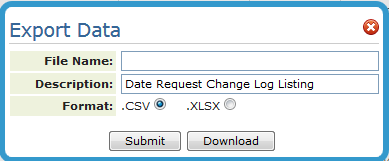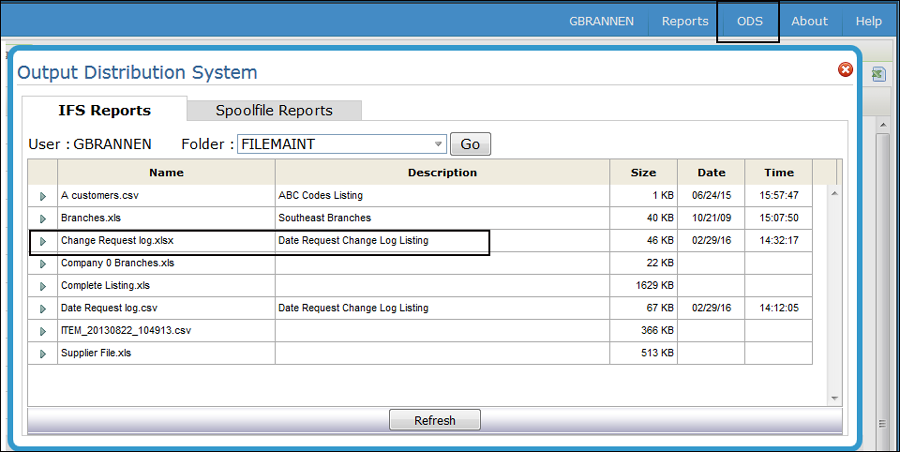Date Request Change Log
Overview and Activation
When this functionality is activated via the System Wide Setting - Options for Ship Date Update Logging, changes to an order's ship date are logged into Navigator File Management.
Permission to use this functionality has to be granted through the Navigator menu (menu options NAV 1, 2 and 5). The process for the three menu options is essentially the same:
- Enter an A for the File Management application.
- For menu options NAV 2 (Authority Class) and NAV 5 (User Level), enter a W to access the Web applications which include File Management.
- Find the Date Request Change Log option and enter the desired level of access.

Checking Order Date Changes

With this setting activated, when a ship date is changed, at either the header or detail level, a log record is entered into the Date Request Change Log option in Navigator File Management.

Notes:
- Line number 0 denotes an Order header line.
- All order ship date changes including order creation, or subsequent changes by other programs such as order change as well as back order fill are logged.
- Changes made by the F10 - Delivery Date during the order entry or order change process create log entries using the program name DLVUPDT.
-
Changes made by using the F10 - Delivery Date functionality in either order entry or order change produce two duplicate entries in the Date Request Change Log. One entry is made by the trigger and records the original program that was changed. The second entry is the DLVUPDT program change entered when F10 is used.
Exporting to a Spreadsheet
The information can be exported to a spreadsheet by clicking the spreadsheet icon ( ) in the upper right hand corner. When the icon is clicked, the Export Data window appears.
) in the upper right hand corner. When the icon is clicked, the Export Data window appears.

Add a File Name, change the Description if needed, and select a format:
- CSV - A CSV is a comma separated values file, which allows data to be saved in a table strucÂtured format. CSVs look like a garden-variety spreadsheet but with a .csv extension. They differ from other spreadsheet file types in that you can only have a single sheet in a file, they can not save cell, column, or row styling, and can not save formulas. CSVs are used primarily for importÂing and exporting product, customer, and order information to and from your store.
- XLSX - Excel spreadsheet.
Clicking:
- Submit - Sends the spreadsheet to the IFS Reports tab of the ODS reports. The report is included in the FILEMAINT folder.
- Download - Downloads the spreadsheet onto your computer and gives you the option of opening or saving the file.

